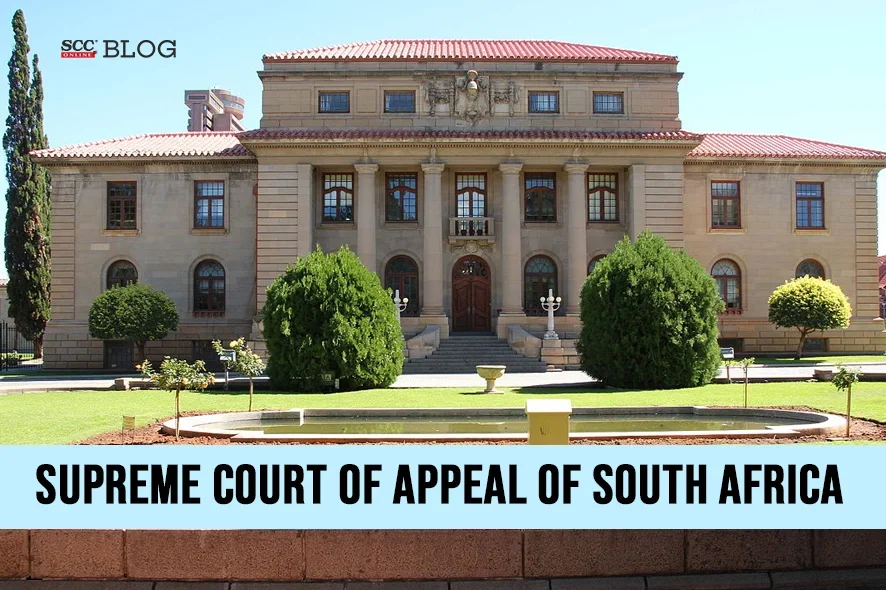Supreme Court of Appeal of South Africa: In the present case the issue for contemplation before a five Judges Bench of Molefe, Mocumine JJA*, Nhlangulela, Daffue and Masipa AJJA was whether a Hyster 250 forklift is a ‘motor vehicle’ as defined in the Road Accident Fund Act (RAF Act) to decide a claim for damages. The Court while dismissing the appeal and denying damages held that, the purpose of use to be taken into account for objectively determining the use for which it had been designed. The Court opined that a Hyster 250 forklift is not a motor vehicle as defined in the RAF Act.
Background
On 4 November 2016, Ms. Ndidzulafhi Nemangwela (Appellant) was knocked down by a Hyster 250 forklift at her workplace causing her to fall where after it drove over her leg. The Appellant sustained injuries and was admitted to hospital, eventually the appellant instituted an action against the Road Accident Fund (RAF) for damages arising out of the injuries sustained. The RAF conceded the merits at 80/20% in favour of the Appellant, but on the assumption that the High Court if finds that the forklift is indeed a motor vehicle.
In its plea the RAF did not expressly deny that the forklift that caused the damage was a motor vehicle. It claimed no knowledge of the allegations relating to the incident, denied them and put the Appellant to the proof thereof. At the trial, and before evidence was led on the merits, the parties agreed that the only remaining issue in respect of the merits was whether the particular forklift was a motor vehicle or not.
Critical Analysis
The Court observed that, the forklift under consideration was designed primarily for loading/offloading goods from the receiving area into the Spar store. Both parties agreed that the Hyster 250 forklift is equipped with a diesel engine, a battery, and one seat for the driver. It has an accelerator, a brake pedal and various other features of a motor vehicle. However, it had no speedometer, brake lights and mirrors. The evidence presented showcased that it transported goods in and out of the Spar store particularly at the receiving area of the Spar premises. The Court further observed that the three requirements to be met to qualify as a motor vehicle therefore are that the vehicle must (a) be propelled by fuel, gas or electricity; (b) be designed for propulsion; (c) on a road.
RAF vehemently argued that the incident occurred at the receiving bay which was a private loading facility and not a public road to be used by the general public at large. It was further argued that in RAF v Vogel, 2004 (5) SA 1 (SCA), it was held that for a collision to occur within the context of the RAF Act, the driver must have driven the vehicle on a public road and the true use or general use of a vehicle on a public road is determinative of whether it is a motor vehicle as prescribed by the RAF.
The Court further observed that, the driver and Appellant were the only witnesses in this matter. It also noted that what constitutes a ‘road’ is not defined under the RAF Act; therefore it must bear its ordinary meaning of ‘a wide way leading from one place to another, one with a specially prepared surface which vehicles can use.’
The Supreme Court of Appeal in the case of Chauke v Santam Ltd., [1996] ZASCA 120 concluded that ‘just because a vehicle can be used on a road by no means implies that it was designed for propulsion on a road’. The forklift in question was therefore not a motor vehicle under the applicable Act.
Another contention submitted by the appellant was that legislation must be interpreted through the prism of the Bill of Rights, and that the definition of motor vehicle in the RAF Act should be aligned with the definition in the National Road Traffic Act. He submitted that this was in accordance with the injunction in Section 39(2) of the Constitution of South Africa.
The Court observed that, if it were to adopt that approach, it would have far reaching consequences to numerous government departments and private bodies like insurance companies who were not parties in the matter. Accordingly, the Court was of the view that this contention was not merited thus dismissing the appeal.
Conclusion
Since there exists common cause between the parties, no basis were found for the appeal being unnecessary. The appellant pursued an issue which was raised at the trial for the first time. It had not been pleaded pertinently. Thus, the Appellants conduct could not be said to constitute an abuse of court process.
[Nemangwela v. Road Accident Fund, 2023 SCC OnLine ZACAC 1, decided on 8-6-2023.]



